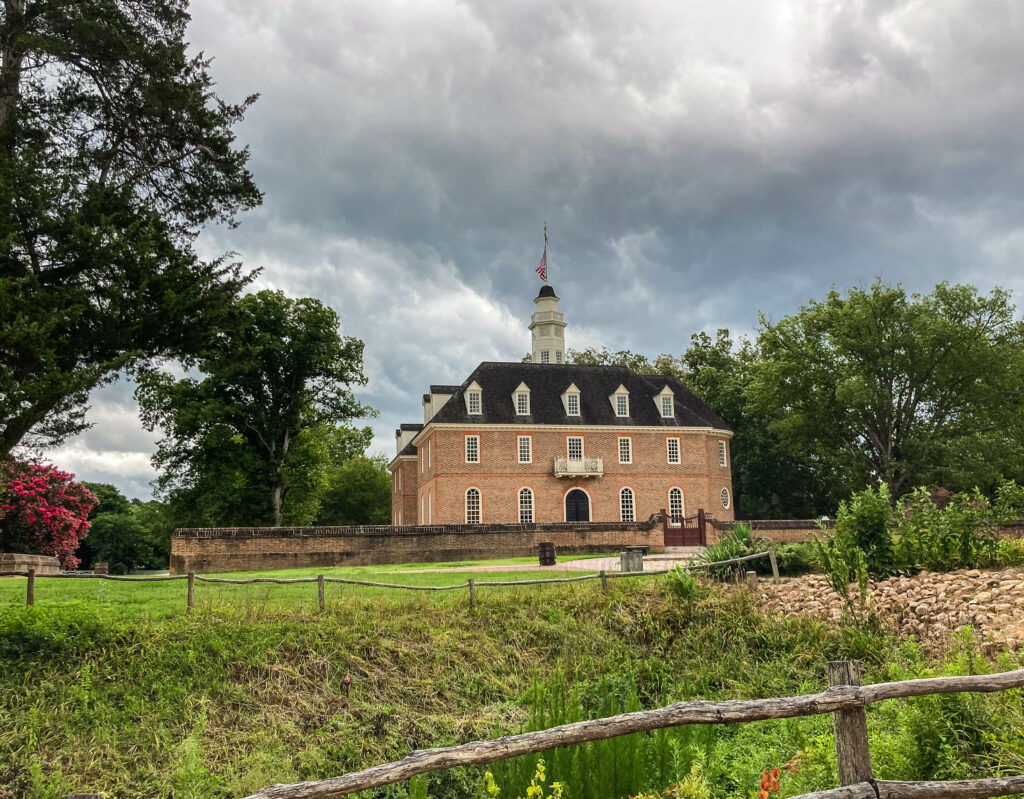Patrick Henry was on a roll.
“Caesar had his Brutus, Charles the First his Cromwell, and George the Third …”
Shouts of “Treason!” interrupted the brilliant firebrand, as he addressed the Virginia House of Burgesses in Williamsburg.
“… may profit by their example,” he concluded. It may or may not have been what he’d originally planned to say.
It was May 29, 1765, when Henry delivered his “Caesar-Brutus” speech against the Stamp Act, in Virginia’s Capitol building. The event was an early milestone on the long and treacherous path that transformed British subjects into American citizens.
This post contains affiliate links. For more information, click here.
Eleven years later, on May 15, 1776, in the same building, Virginia’s elected representatives instructed the colony’s delegation to the Continental Congress in Philadelphia to call for a vote on American independence from Britain. Six weeks later, the 13 colonies declared themselves free and independent states.
But the building saw more than talk of Revolution. The second Capitol in Virginia’s second capital hosted lighter moments like dances and dinners as well.
Virginia’s original colonial capital was Jamestown, where the House of Burgesses first convened in 1619.
In 1698, fire destroyed the Jamestown Statehouse — for the third time. The Burgesses decided to move the colony’s government to Middle Plantation, soon renamed Williamsburg.
Williamsburg’s first Capitol was built during 1701-05. The brick building featured a distinctive open central arcade or “piazza”. It hosted the Burgesses, as well as the Governor’s Council and the General Court, until fire destroyed it in 1747.
The Palladian second Capitol at Williamsburg was built during 1751-53 on the foundations of the first. This was the structure where the Burgesses met in the decades that led up to the American Revolution.
The building was last used as a capitol on December 24, 1779. Richmond became the fledgling state’s capital soon after.
The abandoned capitol’s west wing was torn down for its bricks in 1793; the east burned in 1832. In 1881, the last above-ground traces of its historic halls were removed from the lot.
One of the most significant buildings in American history was gone.
A little more than 50 years later, in 1934, Colonial Williamsburg opened a reconstruction of the first Capitol.
Today, the replica is open for tours during which you can learn about Virginia’s contribution to the American Revolution. Evening programs like Cry Witch immerse visitors in colonial life.
And the beautiful building used to host an annual naturalization ceremony, during which immigrants became Americans. But they stopped during Virginia’s lengthy lockdown. What would Patrick Henry say?
Continue your Virginia adventure:
After my misspent youth as a wage worker, I’m having so much more fun as a blogger, helping other discerning travellers plan fun and fascinating journeys. Read more …

